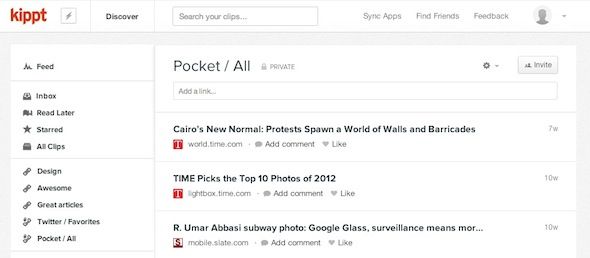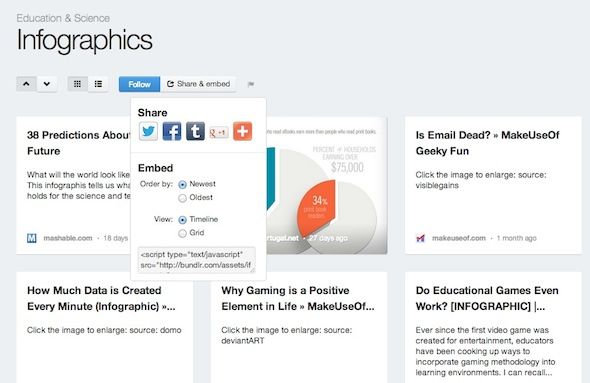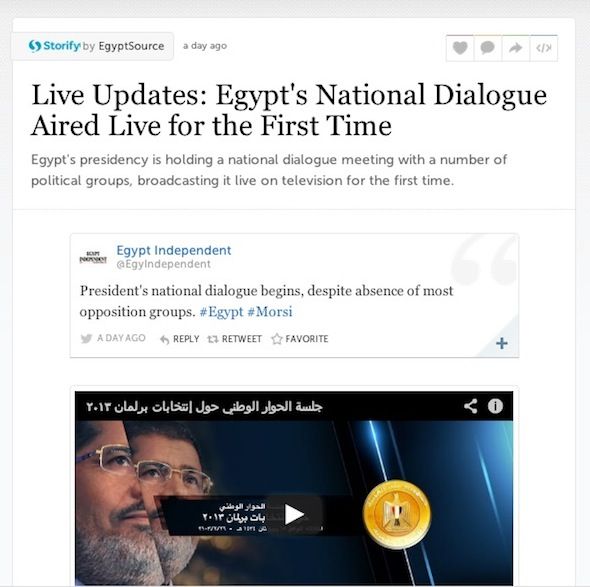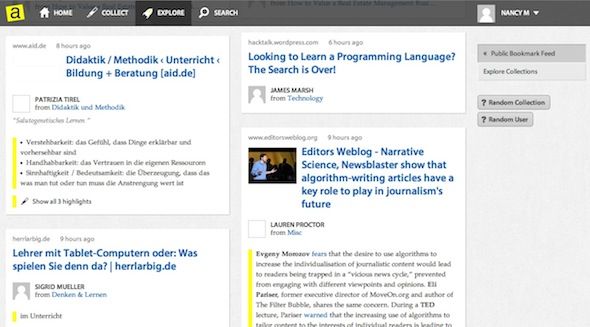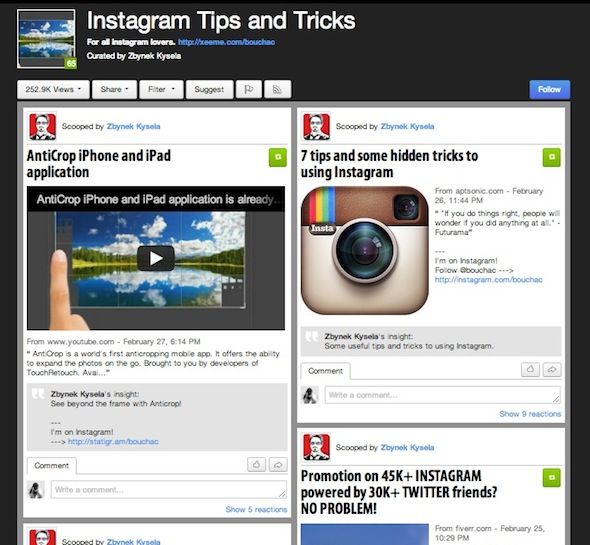With the amount of information online, it often becomes hard to cut through all the noise and get straight to the stuff that you're interested in. If you want to generate relevant content online and find a way to cut through that noise - and make sure people find what you're sharing - there's no better way to do that than with content curation or aggregation.
There are several ways you can go about this - you can use curation services that generate an RSS feed which you can then share with others, you can use a service that allows you to embed that content on your website, or you can use a service that allows you to use your own domain name. Of course the fourth and easiest option is to simply use a service which allows you to point your readers and followers to a URL where that service houses all of your curated content.
RSS Feed
The first way you can share your content with others is by providing them with the RSS feed. They can subscribe to receive these updates in their preferred RSS reader, or you can place the list in a sidebar on your blog, or anywhere else you want to place it.
Kippt is a slick Pocket-like service which bridges the idea of saving articles to read later with a social network, and provides you with the RSS feed to the links and posts that saved to your account. With Kippt, you can create categorized lists of the links you save, can connect the site to your Pocket and Twitter accounts to gain easy access to your saved Pocket items and Twitter favourites, and of course access the RSS feed for each individual list. Since Kippt is a social network unto itself, you can also follow other users or just their individual lists that are of specific interest to you.
Embedding
Not everyone uses RSS feeds, so if you want to simply direct them to a single page with your content on it, you can select an embeddable service. There are several options out there that will provide you with the embed code which you can then paste into a blog post, page, or wherever you like.
Bundlr [Broken URL Removed], which we took an in-depth look at here, lets you create 'bundles' of links, and you can embed those individual bundles wherever you like. You can install a button [Broken URL Removed] to make it easy to add content to your bundles from your Chrome browser, or use a handy bookmarklet with other browsers.
Once you've created your bundles, you can then embed them, either as a grid or as a list, on your site, by generating the embed code. What's cool about Bundlr is that you don't have to embed your collections if you don't want, and can simply share the link via Facebook, Twitter or more.
Storify: Another similar option to Bundlr is the popular curating tool Storify, which we reviewed when it first launched. The advantage that Storify has over other servies is the fact that it provides a more media rich experience. With Storify, you can include more than just links, you can also embed YouTube videos, Tweets, Facebook posts and much more. Storify also makes it easy to find the content from within the site itself.
You can then embed those individual Storify posts wherever you want, or simply direct people to your Storify account. Storify also brings a social network element into the mix, allowing you to follow other users directly on the site. You can direct your friends and followers to your Storify account, or if you already have a well established blog, embed your Storify posts into your blog.
Clipboard: Clipboard is a third option which allows you to either embed the links on your site, share it via social media, or simply direct people to the link. Clipboard also allows you to invite other people to contribute links to your boards.
Clipboard sets itself apart by offering users several ways to save content from the Web. You can either 'clip' the entire page (much in the spirit of Evernote), clip selected text, or clip a selected section of the page. You can easily add content from Clipboard from the comfort of your browser using a Chrome or Firefox extension or a bookmarklet.
A Web Presence
If you'd rather share stuff directly on the Web and direct your followers to that site, there are several options available to you. In addition to the three options listed above, you could also opt for two more choices.
Annotary [Broken URL Removed]: We took an in-depth look at Annotary a few months ago, and while it offers a lot of the same features seen in other sites - clipping and saving links to boards - it has one added advantage. If you want to call the reader's attention to a specific part on that page, but still share that entire page, Annotary allows you to highlight that section.
Pinterest: Another site that needs no introduction is Pinterest. As most of you already know, you can add links, images and more to Pinterest in organized boards. If, for any reason, you're still not familiar with Pinterest, check out our downloadable Pinterest guide which will tell you everything you need to know about the site.
Custom Domain
The final option is to use a service which allows you to use your own domain name, but the content is still housed on their server.
Scoopit: With Scoopit, you can save links to your account, organized by topic. Each topic exists as an individual link which you can share, or which can be viewed on your profile. An interesting feature that Scoopit adds into the mix is automatically generated content. With all the other options, you have to manually add content. With Scoopit on the other hand, you also have the added option of automatically generated content that Scoopit matches to your topic or existing links.
What services do you use to curate or aggregate content from around the Web? Let us know in the comments.
Image credit: Shutterstock


